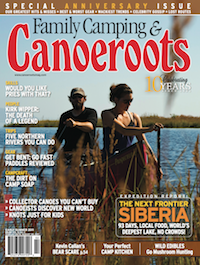As paddling season gets underway in remote destinations, would-be trippers looking to access roadless routes may find themselves lost amid conflicting information on floatplane logistics.
For many popular bush plane models like Cessnas, Beavers and single engine Otters, strapping a canoe onto the floats is the only transport option. However, regulations applicable to flying with external loads are often ambiguous.
According to Transport Canada spokesperson Melanie Quesnel, “Flying a canoe externally is prohibited without a permit.” In the lower 48, the Federal Aviation Administration also requires special certification to transport canoes on floats.
Permits are issued to operators on an individual basis so different carriers may or may not be allowed to transport canoes despite using the same type of plane.
“In the 1970s, the FAA’s Alaskan division developed guidance for carrying external loads…[that] requires the aircraft be moved into the restricted category,” says FAA Public Affairs representative Elizabeth Isham Cory. In Alaska, restricted aircraft can only carry crewmembers—no passengers— while transporting external loads.
The spirit behind regulation is sensible— policy-makers, pilots and passengers don’t want to see mishaps.
The Transportation Safety Board of Canada reports nine accidents involving externally loaded canoes. Whether the boats were directly to blame for the incidents is unclear.
Because of the nature of small scale operations, “meaningful regulation and enforcement are a long way off,” says Al Pace, owner/operator of Canoe North Adventures, an award winning outfitter based out of the Yukon and Northwest Territories that relies on floatplanes for 80 percent of its trips.
“Larger carriers come under much greater scrutiny than your average Ma and Pa charter operation,” Pace continues. He also notes the divide between the rule-makers and what’s going on at remote floatplane bases.
“There’s no question that operators determine their own techniques,” Pace says, alluding to the bush pilots who opened up the North long before regulations were ever considered. “If [authorities] really want to develop solid policy, they should leave their desks and join us on some trips up here.”

This article first appeared in the Early Summer 2011 issue of Canoeroots Magazine.




